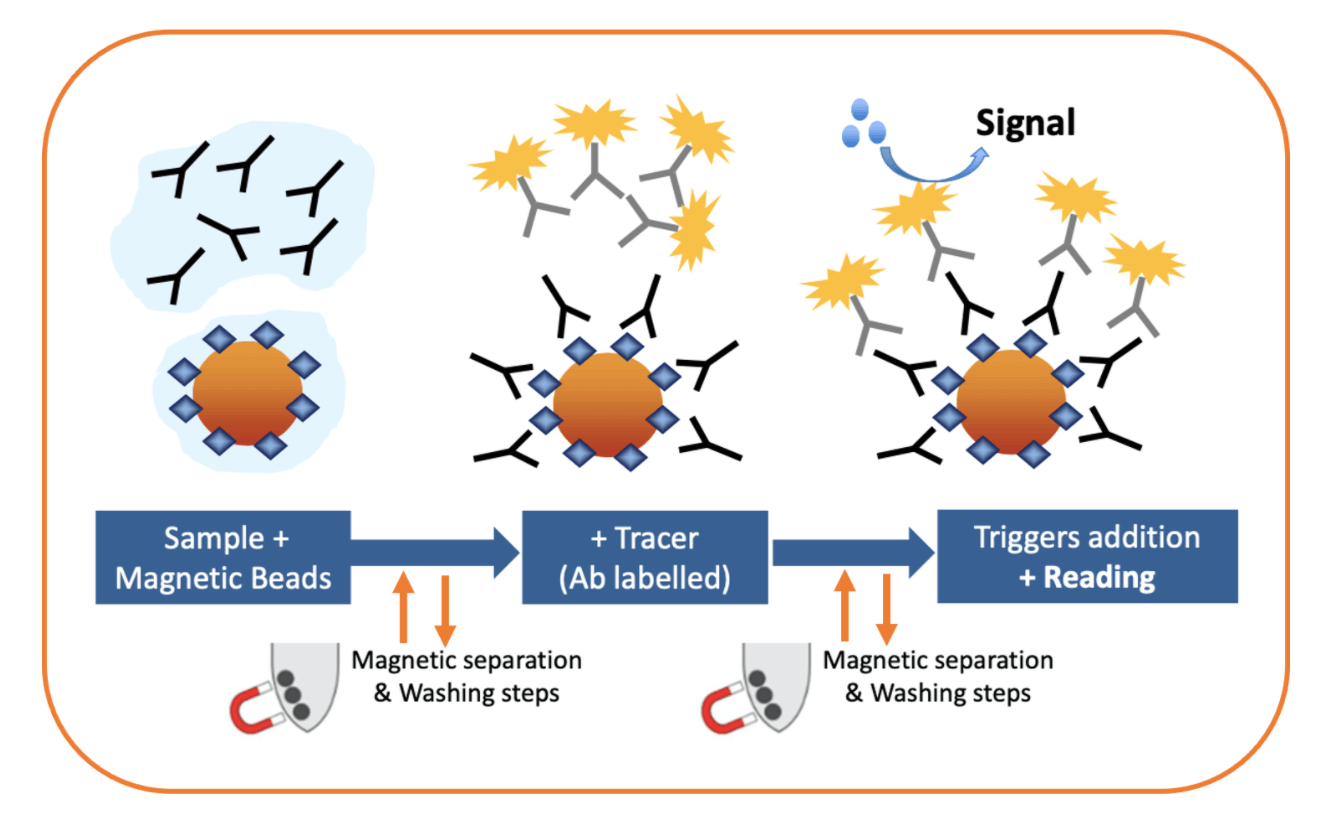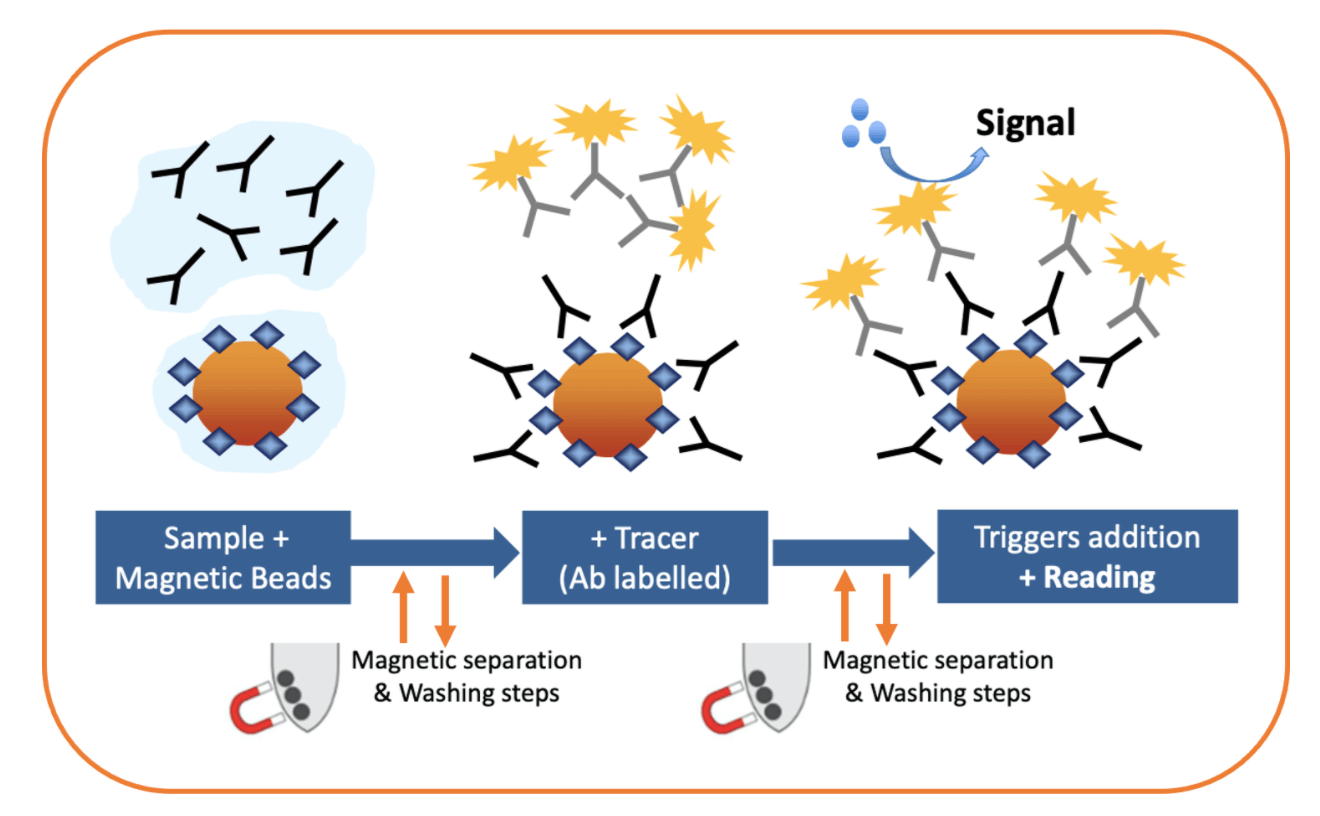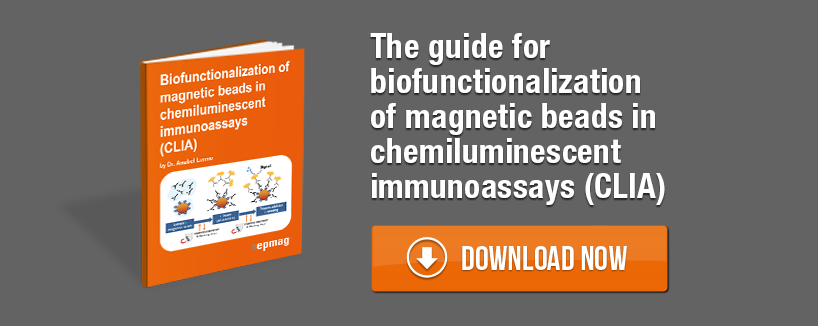How can magnetic beads improve CLIA tests?
The combination of CLIA and magnetic beads brings together all the advantages of both parts. CLIA is known for its high sensitivity which allows the detection of analytes at very low concentrations, and thus providing an excellent limits of detection in a wide dynamic range.

Magnetic beads, on the other hand, are known for their simple protocols which help minimizing and even eliminating potential sources of error that occur in complex systems. Magnetic beads reduce the incidence of non-specific interactions during the capture and isolation processes. In addition, due to their large spherical surface area, magnetic beads allow for a more efficient binding to the target substance.

Magnetic beads separation and washing steps
Separation is a crucial part of the CLIA protocol. Between each binding step, unbound material must be removed as efficiently as possible, using the optimum magnetic separation setup.
Magnetic beads can be funcionalized according to the assay that is required to the target analyte. For example, using CLIA to detect an antibody such as SARS-CoV-2 IgG, the first step will be to incubate the sample that can contain SARS-CoV-2 IgG antibodies to the magnetic beads, which are previously surface-functionalized with specific antigen/s that allow the antibodies to bind to the surface of the magnetic bead.
Magnetic beads will be captured only the target antibody of interest, which will increase the specificity of the assay at this crucial step. Next, a new incubation will be performed where a “tracer” (an anti-IgG in this example) is added and is bonded to the antibodies on the magnetic bead. Then there is another magnetic separation and washing step. This time it is crucial for removing unbound tracer molecules, to ensure that all chemiluminescence response comes from specific bound antibodies. Finally, triggers are added and signal is obtained, which is directly proportional to the material labelled with the chemiluminescent tag.

Magnetic beads washing
Modern magnetic separators ensure that washing steps occur carefully but still efficiently regarding time required for the separation. The constant magnetic force keeps all magnetic beads bound securely to the walls of the container. Both modern magnetic separators and magnetic beads make it easy to perform CLIA tests in plate format or at large scale. In fact, the separation of batches up to 20 L of magnetic-beads suspensions is a well established practice for IVD-kits manufacturing. Using bottles and standard advanced biomagnetic separation systems, the separation processes are smoothly scaled up to reach 50L for customized systems.
Related news
- Overview on Chemiluminescent immunoassay (CLIA)
- Protein Molarity Calculator
- Magnetic immunoprecipitation (IP) input into western blot analysis




